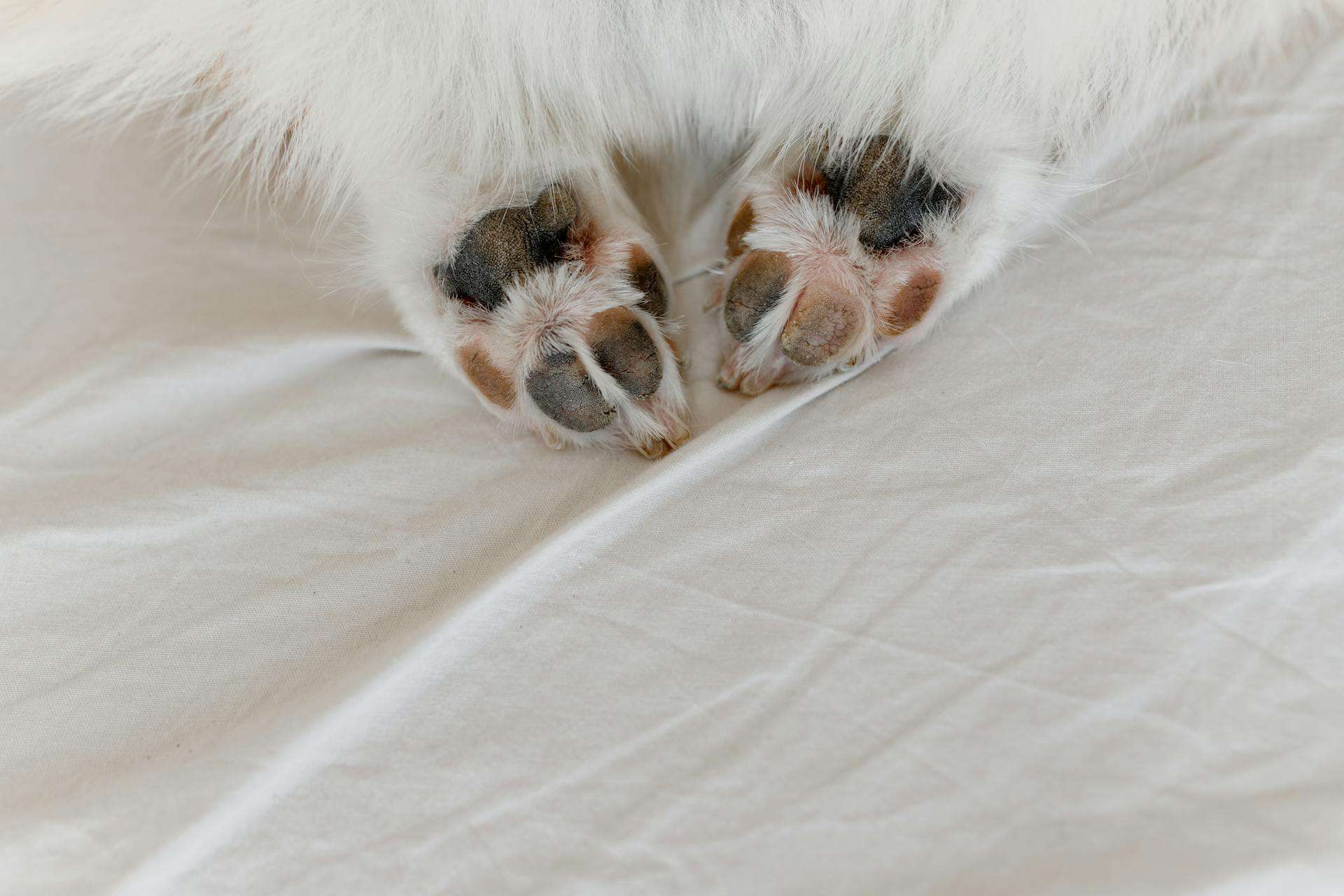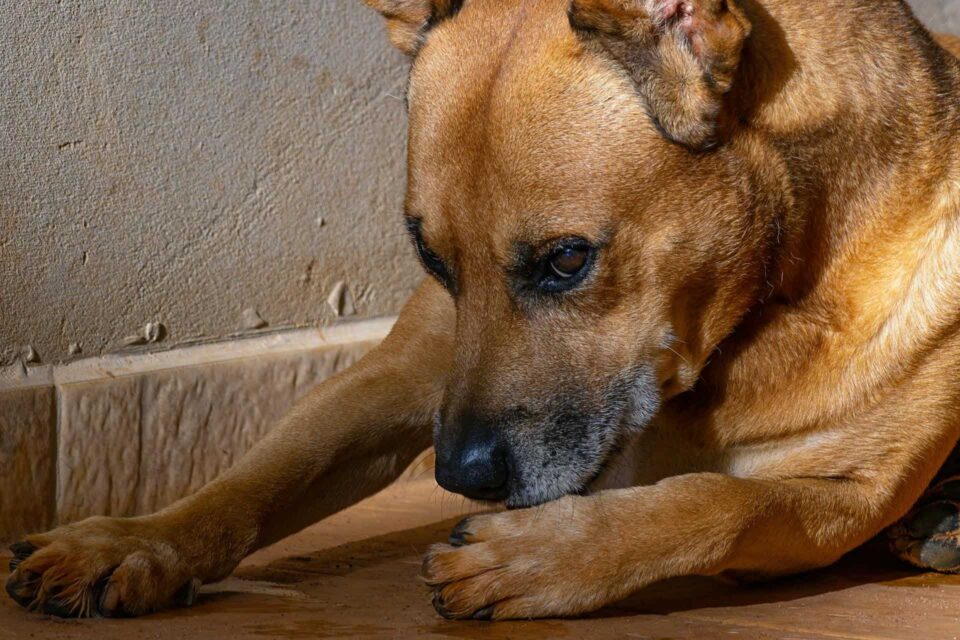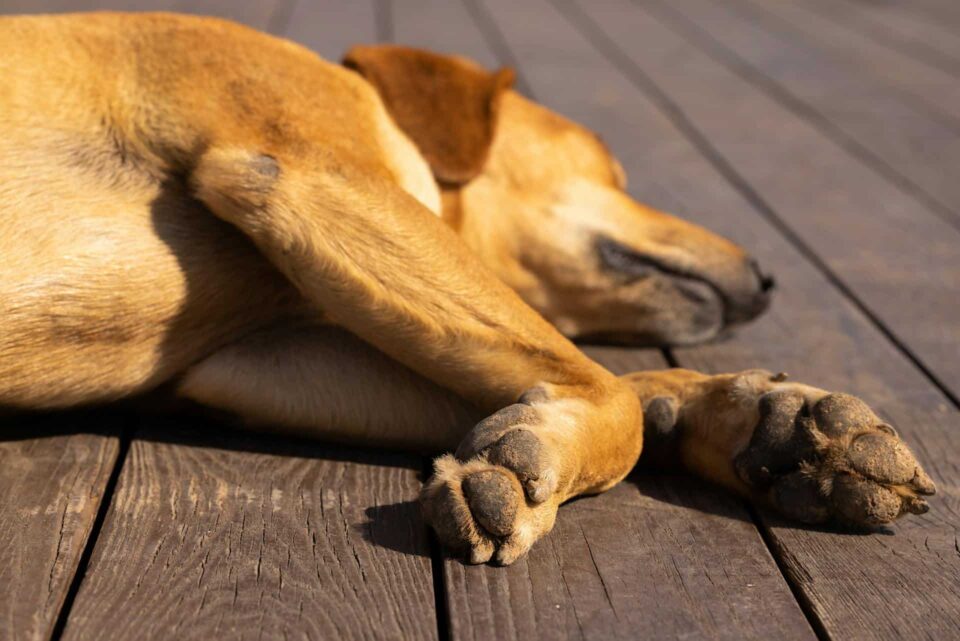
Red Paws: Unraveling the Reason
Dogs often exhibit intriguing behaviors that leave pet owners puzzled, one of which is paw chewing. 'Red Paws: Unraveling the Reason' delves into the various factors that may cause a dog to chew on its paws, ranging from medical issues to environmental triggers. Understanding these causes is crucial for addressing the behavior effectively and ensuring the well-being of our canine companions.
Key Takeaways
- Paw chewing in dogs can be indicative of underlying issues such as skin infections, allergies, or pain from injuries, necessitating thorough investigation and appropriate care.
- Preventive measures like routine checks, maintaining a clean environment, and providing mental stimulation can significantly reduce instances of paw chewing in dogs.
- Professional diagnosis and treatment are essential when home remedies fail to stop the behavior, as it may signal more serious health or behavioral problems.
Deciphering Canine Behavior: The Drive Behind Paw Chewing
Skin Issues and Infections
If you've ever wondered, why are my dogs paws red?, you're not alone. This common concern among pet owners can often be attributed to skin issues and infections. Pododermatitis, a bacterial infection of the paws mentioned by PetMD, is one such condition that can cause redness, swelling, and discomfort for your furry friend.
To tackle these issues, consider the following steps:
- Regularly apply paw balm to soothe dermatitis or skin irritation.
- Use medications prescribed by your vet to treat bacterial or yeast infections.
Remember, a deep thrush infection in your dog's paws is akin to an open wound on human skin. It requires products that not only clean but also promote healthy growth, such as antibacterial wound scrubs and barrier creams. Always consult with your veterinarian for the best course of action and to prevent further complications.
Experience the soothing power of our 3-in-1 paw ointment, tailored to ease discomfort and nurture your furry friend's paws. Discover now for paw-some relief.
Allergies and Environmental Factors
When your furry friend starts to chew on their paws, it's essential to consider the role of allergies and environmental factors. Both environmental and food allergies can trigger this behavior, with signs ranging from intense itching to redness, and even recurrent skin or ear infections. It's not uncommon for seasonal changes to exacerbate these allergies, particularly affecting dogs between the ages of 2 and 4 years.
To address these triggers, here are some steps you can take:
- Identification and avoidance of allergens.
- Use hypoallergenic pet wipes after walks to remove potential allergens like pollen.
- Consult with your veterinarian for medications to manage symptoms effectively.
Understanding canine anxiety causes and signs is crucial, as it can often be mistaken for allergy-induced discomfort. Early recognition and intervention are key to providing your dog with relief. Natural remedies, such as CBD, are gaining popularity for their role in offering natural relief for dogs, but always consult with a professional before starting any new treatment.
Related: HOW TO GROOM DOG’S FEET?
Pain, Injury, and Behavioral Issues
When your furry friend starts to chew on their paws, it might be more than just a quirky habit. Pain from arthritis, sprains, or even minor cuts can lead to this behavior as dogs seek relief. It's crucial to address any injuries with proper wound care and pain management to prevent compulsive licking that can cause further issues.
Behavioral issues like anxiety, boredom, or stress are also common culprits behind paw chewing. These emotional states can lead to a range of symptoms, including excessive grooming. To combat this, consider providing a variety of toys, ensuring regular exercise, and exploring anxiety reduction techniques. If these methods don't suffice, a professional diagnosis may be necessary to uncover underlying issues and prescribe appropriate treatments.
Remember, your dog's paws are a barometer for their overall well-being. Keeping an eye on their condition and behavior can help you nip potential problems in the bud.
Discover the solution to soothe your pet's red paws with our specialized trauma and wound care products for dogs. Elevate their comfort and well-being while unraveling the reasons behind their red paws.

Strategies for Alleviating Paw-Chewing Distress
Routine Checks and Preventive Care
Beyond the basics of preventive care, creating a stimulating environment for your dog is crucial in curbing unwanted paw-chewing behavior. Engage your furry friend with a variety of toys and activities to keep their mind and body active. This not only helps in preventing boredom, which can lead to destructive habits, but also promotes overall well-being.
- Provide a selection of toys that cater to different play styles
- Incorporate regular playtime sessions into your daily routine
- Challenge your dog with puzzle feeders or treat-dispensing toys to stimulate their intellect
Remember, a stimulated dog is a happy dog. By enriching their environment, you're not only addressing the symptom but also nurturing a healthier, more content companion. If you notice persistent issues despite these efforts, don't hesitate to seek professional consultation. Your vet can provide valuable insights and tailor a care plan specific to your dog's needs.
Related: YOUR GUIDE TO PERFECTING YOUR PET’S SKINCARE ROUTINE
Creating a Stimulating Environment
To mitigate the stress that may lead to paw chewing, consider creating a calm environment for your dog. Soft lighting and the use of calming products can make a significant difference. It's crucial to recognize signs of distress early to prevent long-term health issues. Regularly consulting with a vet can provide you with guidance tailored to your dog's specific needs.
Here are some steps to create a more engaging and stress-free space for your pet:
- Introduce new toys and puzzles to keep your dog mentally stimulated.
- Ensure there is a comfortable resting area, away from loud noises and high traffic.
- Consider using pheromone diffusers or calming music to create a serene atmosphere.
Remember, a stimulating environment is not just about adding elements; it's also about removing stressors. Pay attention to your dog's behavior to understand what changes make the most positive impact.
Related: HOW TO TREAT YOUR DOG’S DRY, FLAKY SKIN
Professional Diagnosis and Treatment
When home remedies and over-the-counter solutions don't alleviate your dog's paw-chewing behavior, it's time to seek professional diagnosis and treatment. A veterinarian can conduct a thorough examination to identify any underlying health issues that may be causing discomfort or stress to your furry friend. Early intervention is crucial to prevent the development of more serious conditions.
Your vet may recommend a variety of treatments depending on the diagnosis, which could include:
- Prescription medications to address infections or allergies
- Therapeutic diets to eliminate potential food allergens
- Behavioral therapy to manage stress-related chewing
Remember, consistent follow-up is key to ensuring the treatment's effectiveness and your dog's long-term well-being. Don't hesitate to ask your vet about the best ways to monitor progress and when to report back. By working closely with a professional, you can help your dog lead a happier, more comfortable life.
If your furry companion is suffering from paw-chewing distress, it's essential to address this discomfort promptly. At Gou Gou Pets, we understand the importance of your pet's well-being, which is why we offer a range of holistic infused grooming products and skin care solutions tailored to alleviate such issues.
Don't let your pet suffer in silence; visit our website to explore our veterinary-approved products and take the first step towards a happier, healthier pet. Plus, sign up for our email and receive 10% off your first purchase!

Conclusion
Red paws in dogs are a symptom that should not be ignored, as they often indicate underlying health issues ranging from skin infections to allergies, and from injuries to behavioral problems. Understanding the myriad causes of paw licking and chewing is crucial for pet owners to provide the appropriate care and intervention. Regular examinations, maintaining a clean environment, and addressing any signs of discomfort promptly can help prevent the problem from escalating. By being attentive to our canine companions' behaviors and needs, we can ensure their paws remain healthy and their quality of life is preserved.
Share
